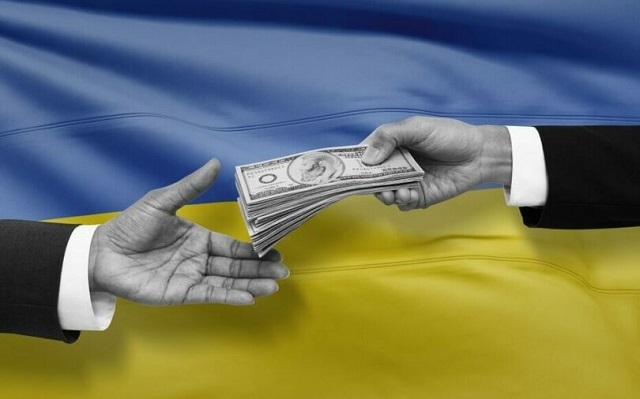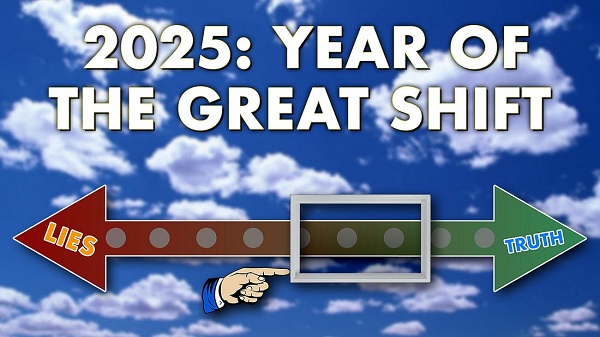conflict
Why the financial theft of the Ukraine war may finally be coming to an end

From LifeSiteNews
Ukraine has suffered so many losses that military conscription law has been altered to allow women to be called in to service.
STORY AT-A-GLANCE
- For years, Ukraine was recognized as one of the most, if not “the” most, corrupt nation in Europe. The country is now struggling to rein in corruption as that is becoming a key hurdle to obtain more financial support.
- According to official aid trackers, the U.S. had sent $76.8 billion in military, financial, and humanitarian aid to Ukraine as of the end of July 2023. The European Union contributed another $85.1 billion in that same timeframe. In mid-October 2023, Biden proposed yet another $105 billion foreign aid package, $61 billion of which will go to Ukraine.
- According to U.S. officials, at least 70,000 of Ukraine’s 500,000 troops had been killed by mid-August 2023, and another 100,000 to 120,000 wounded. Another 9,614 Ukrainian civilians had also been killed as of September 10, 2023.
- The supply of cannon fodder is running so low that Ukraine recently updated its conscription law to include women. Women between the ages of 18 and 60 with medical backgrounds must register for military service as of October 1, 2023.
- Corruption may be a primary driver of this war. The American public being robbed and Ukraine drained of its youths while a relatively small number of corrupt individuals stuff their pockets with cash. American and European taxpayers are paying for the destruction of Ukraine and the elimination of huge numbers of its inhabitants, so that technocrat globalists and central bankers can then profit from the privatization and rebuilding of Ukraine into a “smart country” model for the rest of the world.
(Mercola) — For years, Ukraine was recognized as one of the most, if not “the” most, corrupt nation in Europe. It held on to that reputation all the way up to the day Russia invaded in late February 2022, at which point media worldwide suddenly started rewriting history.
As noted by Ted Galen Carpenter, a senior fellow for defense and foreign policy studies at the Cato Institute, in a sober and clear-eyed article, published in April 2022:
Statements from U.S. and other Western officials, as well as pervasive accounts in the news media, have created a stunningly misleading image of Ukraine. There has been a concerted effort to portray the country… as a plucky and noble bulwark of freedom and democracy…
The notion that Ukraine was such an appealing democratic model in Eastern Europe that the country’s mere existence terrified Putin… is a myth… Even before the war erupted, there were ugly examples of authoritarianism in Ukraine’s political governance …
The neo-Nazi Azov Battalion was an integral part of President Petro Poroshenko’s military and security apparatus, and it has retained that role during Zelensky’s presidency…
The country is not a symbol of freedom and liberal democracy, and the war is not an existential struggle between democracy and authoritarianism. At best, Ukraine is a corrupt, quasi‐democratic entity with troubling repressive policies.
Given that sobering reality, calls for Americans to ‘stand with Ukraine’ are misplaced. Preserving Ukraine’s independence and territorial integrity most certainly are not worth the United States risking war with a nuclear-armed Russia.
Indeed, while President Joe Biden kept sending tens of billions of American taxpayer dollars to Ukraine in the name of “defending democracy,” Zelensky banned all opposition parties in the country and blacklisted American politicians and journalists who questioned the U.S. involvement in the conflict. So much for democracy and democratic values.
Is Ukraine aid part of a money laundering scheme?
According to the Panama Papers released in 2016, which have been described as “a giant leak of more than 11.5 million financial and legal records [which] exposes a system that enables crime, corruption and wrongdoing,” Zelensky is likely just as corrupt as his predecessors, as he, his wife and several associates all own “hidden offshore assets.”
With that in mind, why is the U.S. sending billions of dollars to Ukraine without requiring any kind of accounting for where all this money is going? According to official aid trackers, the U.S. had sent $76.8 billion in military, financial, and humanitarian aid to Ukraine as of the end of July 2023.
The European Union contributed another $85.1 billion in that same timeframe. And, in mid-October 2023, Biden proposed yet another $105 billion foreign aid package, $61 billion of which will go to Ukraine.
The lack of oversight combined with the lack of Ukrainian progress in the conflict and the refusal to enter into peace negotiations raises suspicions that these aid packages may simply be another money laundering scheme like we saw with FTX. At least $178 million sent to Ukraine through the now-defunct FTX crypto exchange may have been laundered back to the Democratic Party in the U.S.
Ukraine still rife with corruption
Lately, mainstream media have started to revisit the issue of corruption in Ukraine, probably because public perception of corruption may undermine the entire operation.
For example, October 2, 2023, Politico reported receiving a “sensitive but unclassified” strategy paper in which Biden administration officials warn that “Perceptions of high-level corruption” could “undermine the Ukrainian public’s and foreign leaders’ confidence in the war-time government.” According to Politico:
The administration wants to press Ukraine to cut graft… But being too loud about the issue could embolden opponents of U.S. aid to Ukraine, many of them Republican lawmakers who are trying to block such assistance. Any perception of weakened American support for Kyiv also could cause more European countries to think twice about their role.
Ukrainian graft has long been a concern of U.S. officials… But the topic was deemphasized in the wake of Russia’s February 2022 full-scale invasion…
More than a year into the full-scale war, U.S. officials are pressing the matter more in public and private. National security adviser Jake Sullivan, for instance, met in early September with a delegation from Ukrainian anti-corruption institutions.
A second U.S. official familiar with the discussions confirmed to POLITICO reports that the Biden administration is talking to Ukrainian leaders about potentially conditioning future economic aid on ‘reforms to tackle corruption and make Ukraine a more attractive place for private investment.’
No such conditions have been proposed for military aid, however, which makes up the bulk of the money spent on Ukraine. Similarly, in mid-September 2023, Reuters reported that “billions of dollars of aid earmarked for Zelensky’s government as well as ambitions to join the European Union ride on Ukraine proving that it is serious about fighting corruption and embracing good governance.”
Zelensky, for his part, has increasingly tried to portray himself as a staunch corruption fighter, firing more than a dozen senior officials on corruption charges in January 2023.
In August he also fired all the heads of the draft offices across the country, after it became known that men were bribing their way out of military service by paying for medical exemptions. In September he also fired his minister of defense over allegations of corruption within the ministry. A Ukrainian Supreme Court justice was also arrested this past summer for taking bribes.
Yet, such mass firings and arrests of high-level individuals have done little to quell rumors and accusations that Zelensky still tolerates corruption within his inner circle, perhaps because it’s true. According to a top adviser to Zelensky, who spoke to a Time journalist off the record, “People are stealing like there’s no tomorrow.”
An expensive, unwinnable war
In a September 2023 meeting with U.S. senators, Zelensky pleaded for more funds saying “You’re giving money. We’re giving our lives.” Indeed, according to U.S. officials, at least 70,000 of Ukraine’s 500,000 troops had been killed by mid-August 2023, and another 100,000 to 120,000 wounded.
Another 9,614 Ukrainian civilians had also been killed as of September 10, 2023. So many Ukrainian youths have been thrown into the meat grinder that the average age of Ukrainian soldiers is now 43. Men up to the age of 60 face the risk of being drafted at any time.
The supply of cannon fodder is running so low that Ukraine recently updated its conscription law to include women. Women between the ages of 18 and 60 with medical backgrounds, including doctors, nurses, midwives, dentists and pharmacists, must register for military service as of October 1, 2023.
However, unlike their male counterparts, women are not barred from leaving the country unless they’re called in for active duty. Ukraine is also trying to get as many Ukrainians back from other countries as well. To that end, Norway recently announced it will pay EUR 1,500 in cash to any Ukrainian willing to go home.
Yet despite the enormous sums of money being poured into Ukraine, the weapons sent, the conscription of women and aged civilians, Ukraine is making no headway and have no conceivable way of winning. Even some of Zelensky’s closest aides are now saying he’s “deluding himself” thinking he can still somehow win.
NATO countries are running out of ammunition and warn of shortages, while Russia has ramped up its military hardware production more than tenfold. And, even if we continue to supply the weapons, Ukraine is running out of able-bodied fighters to use them.
Preplanned post-war profiteering
In the final analysis, one wonders whether corruption might actually be a primary driver of this war. Is the American public being robbed and Ukraine drained of its youths while a relatively small number of corrupt individuals stuff their pockets with cash?
It looks that way, especially in light of the news that BlackRock, which already owns most of the private assets in the world, is positioning itself to profit from a post-war Ukraine. As reported by Business Today in early May 2023:
President of Ukraine, Volodymyr Zelensky, recently met with the management team of BlackRock, the world’s largest asset management company, to discuss the creation of an investment fund aimed at restoring the country’s economy through public and private capital. Netzines have not taken well to the news with many criticizing Zelensky over the meeting.
A Twitter user said, ‘Taxpayers pay the war bills, private firms get the profits.’ ‘Ukraine being privatized and sold off to companies like Blackrock,’ another said.
According to the press service of the Office of the President, the parties discussed the details of the investment fund’s creation and implementation of large-scale business projects in Ukraine.
The U.S. is also keen on Ukraine privatizing its banks, which will open the door for central bankers to take over. And let’s not forget that the big picture plan for Ukraine’s post-war reconstruction is to turn the whole country into smart cities with “smart governments” run by artificial intelligence.
It’s also a testing ground for warfare-related AI technologies said to be “paving the way for AI warfare in the future,” although it doesn’t appear to provide them with much advantage at the moment.
In short, it appears American and European taxpayers are paying for the destruction of Ukraine and the elimination of huge numbers of its inhabitants, so that technocrat globalists and central bankers can then profit from the privatization and rebuilding of Ukraine into a “smart country” model for the rest of the world.
Reprinted with permission from Mercola.
Note from LifeSiteNews co-founder Steve Jalsevac: Cost, death, and injury estimates quoted from U.S. government sources in this article are not reliable since the Biden administration cannot fully admit the political disaster of their proxy war using Russia to bring about regime change in Russia, break up the world’s largest nation, and take control of its vast natural resources. Many alternative news sources have indicated Ukrainian deaths to be far higher, up to possibly 400-500,000, and U.S. and EU financial costs to also be far higher than admitted.
No one knows the real costs because audits of U.S. military expenses have proven to be impossible, Ukraine is the most corrupt, money-laundering European nation, and there are additional, multi-billion-dollar intelligence gathering/CIA costs related to the conflict never provided to the public. The conflict has also cost the West massive direct and indirect expenses, such as devastating economic fallout from the U.S.-directed blowing up of the Nord Stream pipelines for which a current U.S. propaganda campaign is attempting to assign blame for that disaster on Ukraine operatives as the U.S. is engaging in a withdrawal of support for the failed war.
As well, the unprecedented level of failed Western sanctions against Russia have backfired on the West with the EU suffering the most to the tune of many billions of dollars and to an extent that is threatening the economic stability of the EU. Many other, especially poor developing nations, have also greatly suffered from the war and sanctions. Ukraine/NATO destruction of Russia’s main ammonia pipeline has deprived those nations of critically needed fertilizer and advanced the globalist ‘climate change’ campaign against fertilizer use.
The war, sanctions, and disastrous U.S./NATO killing of the very reasonable diplomatic peace settlement agreed to between Ukraine and Russia in March 2022, have resulted in far more harm to Ukraine and the West than to Russia. The formerly communist nation has astonishingly managed to benefit in many ways from having to resist NATO actions against it related to the conflict.
Russia has astonishingly maintained a healthy economy and gained numerous new nation-state allies representing a majority of the world’s population because of this terrible war conspiracy to increase Western economic hegemony and force the globalist UN/WEF/ Blackrock/Vanguard/State Street/Great Reset/New World Order agenda. LifeSiteNews, from the very beginning of the conflict, sensed this agenda and has been strongly encouraging peace negotiations in order to save Ukrainian lives.
We have never supported the Russian Special Military Operation. However, we have acknowledged that Russia has legitimate fears over broken U.S. promises related to the constant, unnecessary expansion of NATO along its borders. And there has been understandable, grave Russian concern over the horrific shelling and unprovoked killing of 14,000 Russian-speaking Ukrainian civilians by the Ukraine military since the U.S.-assisted violent, Ukraine regime change coup in 2014. We are simply uncompromisingly pro-life, pro-peace, and anti-globalist tyranny.
Artificial Intelligence
AI Drone ‘Swarms’ Unleashed On Ukraine Battlefields, Marking New Era Of Warfare


From the Daily Caller News Foundation
Artificial intelligence-powered drones are making their first appearances on the battlefield in the Russia-Ukraine war as warfare creeps closer to full automation.
In bombardments on Russian targets in the past year, Ukrainian drones acting in concert were able to independently determine where to strike without human input.
It’s the first battlefield use of AI “swarm” technology in a real-world environment, a senior Ukrainian official and Swarmer, the company who makes the software, told the Wall Street Journal in a Tuesday report. While drones have increasingly defined modern battlefields, swarms until now had been confined to testing rather than combat.
“You set the target and the drones do the rest,” Swarmer Chief Executive Serhii Kupriienko told the WSJ. “They work together, they adapt.”
So far, the Swarmer technology has been used hundreds of times to target Russia assets, but was first used a year ago to lay mines on the front, the Ukrainian official told the WSJ. The software has been tested with up to 25 drones at once, but is usually utilized with only three.
Kupriienko told the WSJ that he was preparing to test up to 100 drones at once with the linking software.
A common arrangement used on the battlefield includes one reconnaissance drone to scout out the target and two explosive drones delivering the payload on target, the official told the WSJ.
While Western nations such as the U.S., France and the United Kingdom are also pursuing drone swarm technology, they have not deployed swarm technology on the battlefield the way Ukraine has, according to the WSJ. Currently, autonomous weapons are not regulated by any international authority or binding agreement, but ethical concerns around the technology has led many to call for increased regulation of weapons like the Swarmer system.
The Ukrainian Ministry of Foreign Affairs did not immediately respond to the Daily Caller News Foundation’s request for comment.
conflict
Trump Pentagon Reportedly Blocking Ukraine From Firing Western Missiles Deep Into Russia


From the Daily Caller News Foundation
The Department of Defense has spent months blocking the Ukrainian military from using American and British-made missiles to hit targets deep inside Russia, The Wall Street Journal reported Sunday, citing unnamed U.S. officials.
Undersecretary of Defense for Policy Eldridge Colby reportedly designed the procedure to review requests to carry out the long-range strikes with weapons that are either of U.S. origin or that require American intelligence or use components provided by the U.S., according to the WSJ. Secretary of Defense Pete Hegseth reportedly has the final say on whether Ukrainian forces can use the MGM-140 ATACMS (Army Tactical Missile System) to hit targets in Russia.
The reported blocks on missile strikes coincides with a Trump administration effort to broker a peace deal between Russia and Ukraine. A Pentagon spokesperson declined to comment further on the matter.
BREAKING: President Vladimir Putin reacts to B-2 Flyover pic.twitter.com/1mzVn7DxlW
— Jack Poso 🇺🇸 (@JackPosobiec) August 15, 2025
The Biden administration allowed Ukraine to carry out strikes with ATACMS in November, weeks after President Donald Trump won the 2024 election, the New York Times reported. Trump criticized the move during a December interview with Time magazine.
“It’s crazy what’s taking place. It’s crazy,” Trump said. “I disagree very vehemently with sending missiles hundreds of miles into Russia. Why are we doing that? We’re just escalating this war and making it worse. That should not have been allowed to be done.”
Trump and Russian President Vladimir Putin met in Alaska on Aug. 15 for a summit meeting during which Trump sought to secure a cease-fire in Russia’s war with Ukraine. As Trump greeted Putin, a B-2A Spirit stealth bomber and several fighters carried out a flyover of Elmendorf Air Force Base.
Trump met with Ukrainian President Volodymyr Zelensky and major European leaders on Aug. 18 to update them on the summit.
In July, Trump reached an agreement with NATO where members of the alliance would purchase weapons, including MIM-104 Patriot surface-to-air missiles, and donate them to Ukraine.
-

 Business2 days ago
Business2 days agoTaxing food is like slapping a surcharge on hunger. It needs to end
-

 Health2 days ago
Health2 days agoFDA warns ‘breast binder’ manufacturers to stop marketing to gender-confused girls
-

 Uncategorized17 hours ago
Uncategorized17 hours agoMortgaging Canada’s energy future — the hidden costs of the Carney-Smith pipeline deal
-

 International2 days ago
International2 days ago2025: The Year The Narrative Changed
-

 Business1 day ago
Business1 day agoThere’s No Bias at CBC News, You Say? Well, OK…
-

 Health2 days ago
Health2 days agoAll 12 Vaccinated vs. Unvaccinated Studies Found the Same Thing: Unvaccinated Children Are Far Healthier
-

 Agriculture2 days ago
Agriculture2 days agoSupply Management Is Making Your Christmas Dinner More Expensive
-

 Daily Caller2 days ago
Daily Caller2 days agoTrump Reportedly Escalates Pressure On Venezuela With Another Oil Tanker Seizure









